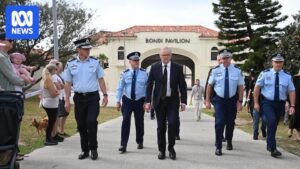
A national online database of lesson plans could significantly reduce teachers’ weekly workloads and help reverse years of stagnating student results, according to a recent report by the Productivity Commission. The commission’s fourth interim report emphasizes the need for a skilled and adaptable workforce to lift Australia’s productivity.
The report highlights concerning statistics from NAPLAN test results, which reveal that one in three school students fail to meet minimum literacy or numeracy standards. Catherine de Fontenay, one of the commissioners leading the inquiry, stated,
“Anything that improves our foundational skills in schools is going to have the biggest impact on productivity.”
The Case for a National Lesson Plan Database
Throughout consultations, the commission repeatedly heard that the availability of tools and resources for teachers varies significantly across jurisdictions and sectors. Not all states and territories have developed lesson planning materials that can be shared through a centralized database. The report suggests that the Commonwealth should invest in and promote a single online platform containing these materials, with the understanding that plans would be adapted for local contexts and the diverse abilities of students.
The commission also advocates for the federal government to lead the development of a national approach to education technology in schools, including the use of artificial intelligence (AI). Effective implementation of these reforms will require collaboration and buy-in from state and territory governments, school sectors, school leaders, and teachers.
Integrating AI in Education
De Fontenay noted a lack of coordination regarding the use of AI in classrooms.
“What we found is that all the states are on a journey. A lot of them are at the stage of trying to ban the use of GenAI, with various levels of success,”
she said. While some state school directorates focus on the risks, others are developing their own GenAI tools, such as Educhat in New South Wales.
Teachers face a challenging situation, experimenting with different technologies amidst potential risks. However, AI holds promise for personalized education, as it can tailor questions based on a student’s performance and target their weaknesses. De Fontenay emphasized the need for a collective agreement on how to proceed with AI integration.
Broader Implications for Workforce Skills
As Treasurer Jim Chalmers prepares for an economic reform roundtable, the commission also recommends easing regulatory restrictions around certain jobs, which it says exacerbate skills shortages. The report suggests reviewing occupational entry regulations (OERs) for professions like motor vehicle repairers, painters, decorators, and hairdressers, where such requirements apply inconsistently across jurisdictions.
De Fontenay clarified that the goal is not to eliminate minimum requirements but to address “credentialism” that may hinder workforce entry.
“It’s more a question of proportionality. Audits are a good example. Right now, the level of auditor requirements is the same as if you are auditing BHP or a small enterprise. We think there should be a lower tier risk of license with simpler requirements,”
she explained.
Enhancing Workforce Training and Recognition
The interim report also proposes initiatives to boost the skills of the current workforce. It recommends providing financial incentives, potentially in the form of a tax credit, to small and medium-sized businesses that invest in training their staff. Additionally, the report supports better recognition of prior education, making it easier for students to claim credit for previous studies.
De Fontenay noted that while AI is a prominent topic, occupational change remains a significant feature of labor markets both domestically and internationally.
“We need to prepare people to change occupations when their preferences change, or when their professions shrink or evolve,”
she said.
The commission’s recommendations underscore the need for a coordinated national effort to enhance educational resources and workforce skills, aiming to address longstanding challenges and prepare for future demands.







